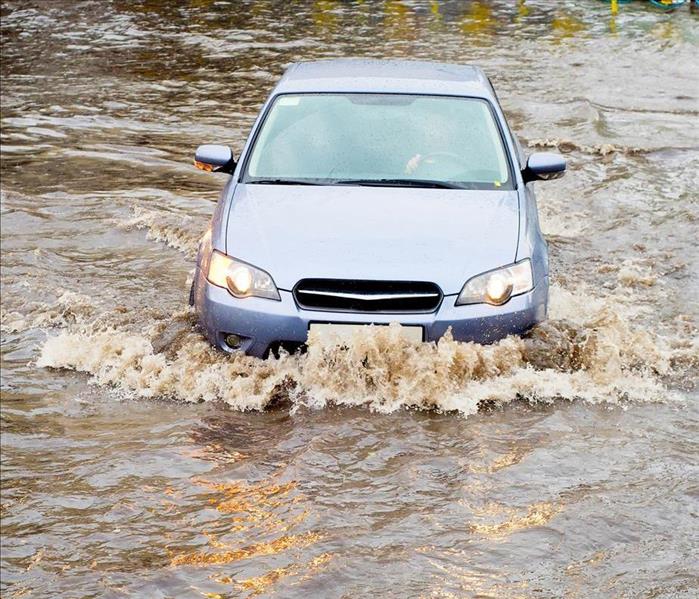Why You Shouldn’t Drive Down a Flooded Street
10/23/2021 (Permalink)
Floodwaters in Ogden, UT, can arise from heavy rainfall, broken water pipes, or overflowing bodies of water. When you have somewhere you need to be, and you're just ready to get there, driving down a flooded street can be tempting. It may look OK from your steering wheel, but it can actually be perilous. Here are just a few reasons why you should never drive down flooded roads.
1. It Can Be Deeper Than You Realize
It can be challenging to determine how deep water is when you encounter it on the road. Even if it appears shallow, the road surface and underlying ground could have washed away, making the water much deeper.
2. You Can Quickly Lose Control
Six inches of water can touch the bottom of the typical car and cause stalling and even loss of control. Most vehicles will float if they come into contact with one foot of water, and two feet of rushing water can sweep away even large trucks and SUVs.
3. You Can't Always See What's Below
You can't see what's underneath murky floodwaters. Therefore, it can be frightening to think about having no control over where your car is being carried and not knowing what you could run into that could hurt you, your vehicle, or others.
4. It Can Destroy Your Car
Floodwaters can not only do immediate damage to your car, but they can also have lingering effects that may not show up for months. You may have everything from cosmetic damage to engine damage and electrical short-circuiting.
Flood damage experts will tell you to never drive in water that you don't know the depth of. However, there are times when you may already be in it when it floods.
Travel Tips for a Safe Journey in Bad Weather
1. Turn Around
Avoid fast-moving floodwaters. They can carry even large vehicles with ease. Floodwater can even flip a car in as little as 12 inches.
2. If There's No Alternate Route, Take Shelter
If there's no alternate route to take, get out of your vehicle and move to higher ground. Wait until you can safely travel to get back in your car.
3. Travel Slowly
Enter a road as slowly as possible, usually at 1-2 mph). Cross a flooded street at a maximum speed of 3-4 mph. Cars should take turns crossing the road one by one, providing plenty of room and time for each vehicle to pass through.
4. Watch for Obstructions
Floodwaters are usually murky, meaning you won't be able to see what's underneath the water. You will not only have to worry about what is underneath but also what is floating at the surface. Large tree branches, other vehicles, and various other hazards could be floating in the water. You also need to look out for obstacles, such as trees, buildings, and parked cars, that you could run into after losing control of your vehicle.
5. Dry Your Brakes
Once you're out of the water, lightly tap the brakes slowly several times. This will help dry the brakes.
You should avoid traveling down a flooded street at all costs. Now you know why it can be hazardous and how to navigate enough to safely make it to a stop.




 24/7 Emergency Service
24/7 Emergency Service
